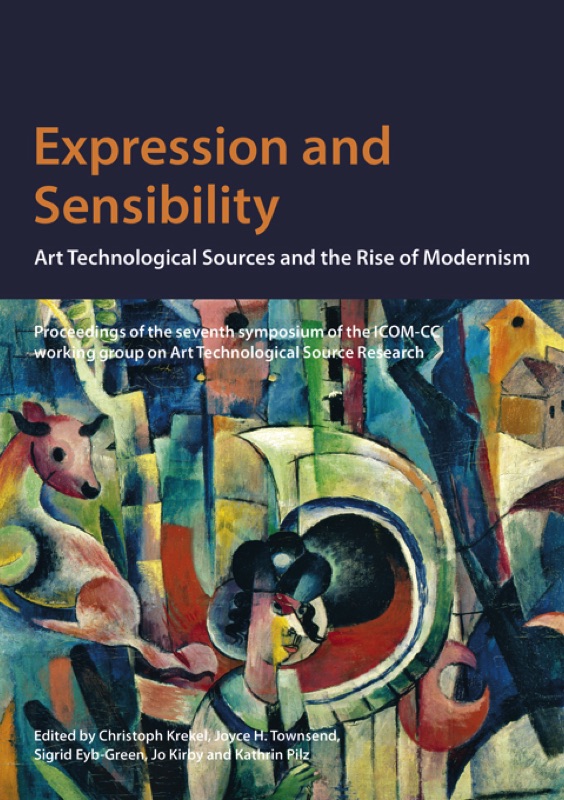The period between 1850 and 1940 is characterised by completely new artistic ideas and concepts as well as the introduction of many new products such as tubes of oil, tempera-based paints, synthetic organic pigments etc. offered by artists’ colourmen, and industrial product ranges including metallic pigments. Some artists – often unfamiliar with the technical properties and qualities of ready-made products – reacted to these developments by introducing innovative artistic techniques while others reintroduced technical concepts that were considered obsolete by established institutions, or originated from non-European civilisations. There was a revival of interest in medieval and antique art technological sources, and German paint technologists in particular became involved with artists’ materials, their use and studies of their material properties.
The papers in this volume discuss the situation of artists during the early age of industrialisation in several European countries, the benefits and challenges that the new materials brought to artistic practice and their effect on the ways in which techniques were taught in the art academies. For innovative artists the new materials were significant, but others were sceptical of the new industrial products and there was a struggle towards the standardisation and documentation of working processes, paints and even aesthetic concepts.
For a look inside click here.
Foreword
Acknowledgements
Feeling the techniques of the past: establishing a link between later 19th-century French painting techniques and their historical European predecessors
Isabelle Nové
‘The golden age of the living painter 1860–1914’? How debt, default and London's declining art market affected painters in the second half of the 19th century
Sally Woodcock
‘Shilling vade-mecums’: watercolour painting manuals and the advancement of watercolour 1850-1880
Fiona Mann
Italian artists’ self-taught ‘compensation strategies’ for their lack of technical training: a study on Gino Severini
Margherita d’Ayala Valva
The disparity between sources and practice in mid-19th-century English church wall painting
Elisabeth Woolley
The use of pigments in 19th-century oil paintings in Portugal: a comparative study of documentary sources and artists' practice
Ângela Ferraz, Marta Félix Campos, Diego Sanches and Leslie Carlyle
Die Farben fließen, die Linien ragen empor, im Schatten glühen die Früchte: the working processes of Arnold Böcklin and Hans von Marées
Wibke Neugebauer
Diego Rivera’s revival of encaustic painting: the use of wax in Mexican avant-garde painting
Sandra Zetina
An introduction to a questionnaire concerning painting technique from the Silesian Museum of Fine Arts in Wroclaw, 1899-1938
Silke Beisiegel
Evaluation of selected written sources on the painting techniques of Heinrich Campendonk and Heinrich Nauen
Stefanie Meyer and Jenny Annika Nieberle
Between chance and choice: Max Ernst’s frottages and grattages on canvas from the Menil Collection, Houston
Ellen Hansbach Bernal and Anikó Bezúr
Poisonous and unstable: iodine-based pigments in the source literature and beyond
Jilleen Nadolny
Metallic paints and modernism: artists’ writings and documentary sources
Maria Kokkori, Ken Sutherland and Francesco Casadio
Presenting the technical development of painting at the Deutsches Museum, Munich
Kathrin Kinseher
The chemist Wilhelm Ostwald (1853–1932) and his wide network of contemporary art technologists
Albrecht Pohlmann
Die Wiedergeburt der Farbe: Bruno Taut’s understanding of colour
Stephanie Dietz
How to secure the quality of artists’ paints? Towards the regulation of artists’ paints in Germany
Andreas Burmester
Shorter papers from poster presentations
Between art and science: painting technique workshops by Kurt Wehlte
Monika Kammer
Harriet Backer: the artist’s paint tubes in Uvdal stave church and her corresponding paintings
Hartmut Kutzke and Tine Frøysaker
Fritz Gerhardt’s casein paint: a material for mural and easel painting around 1900
Eva Reinkowski-Häfner
